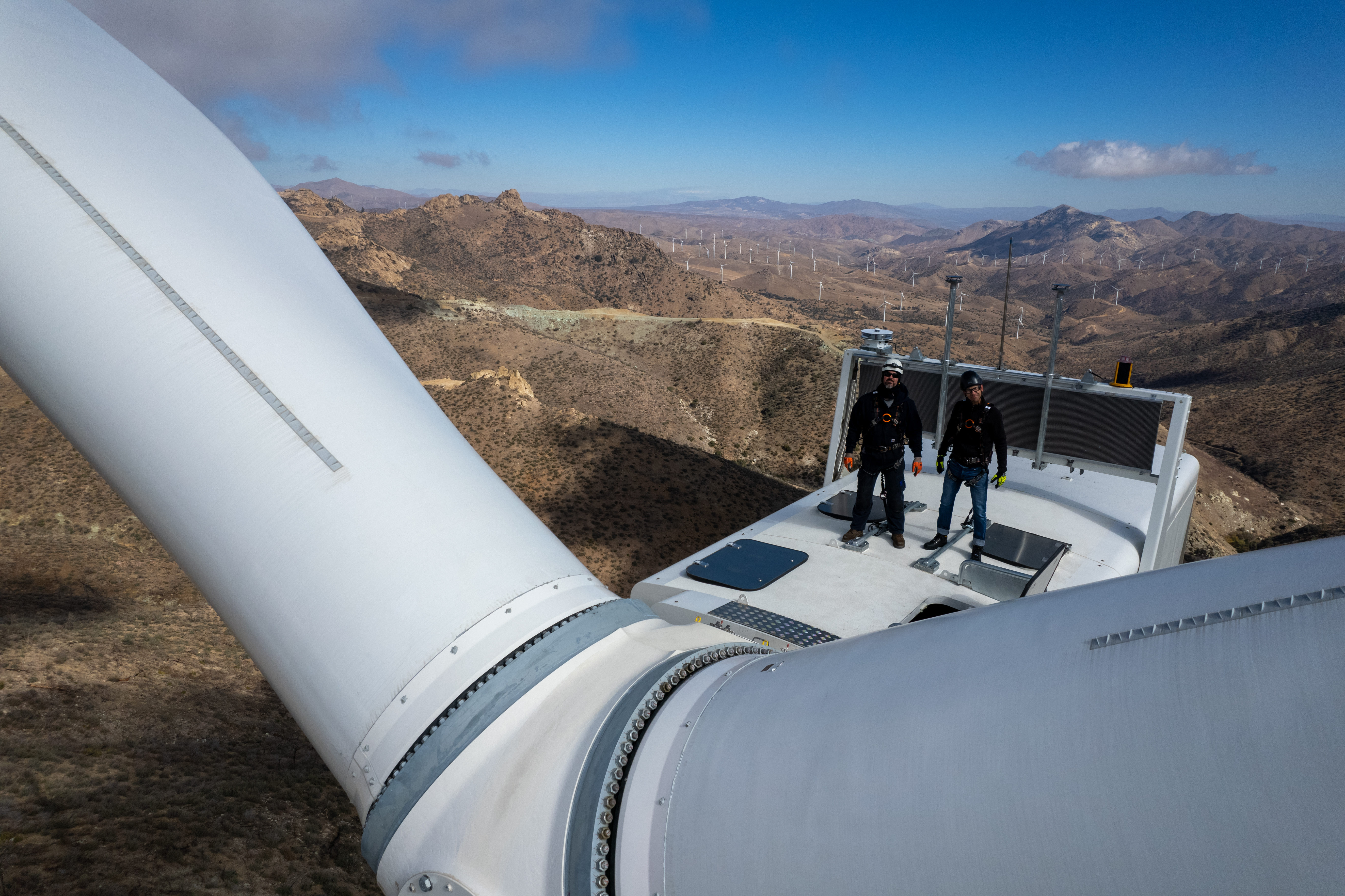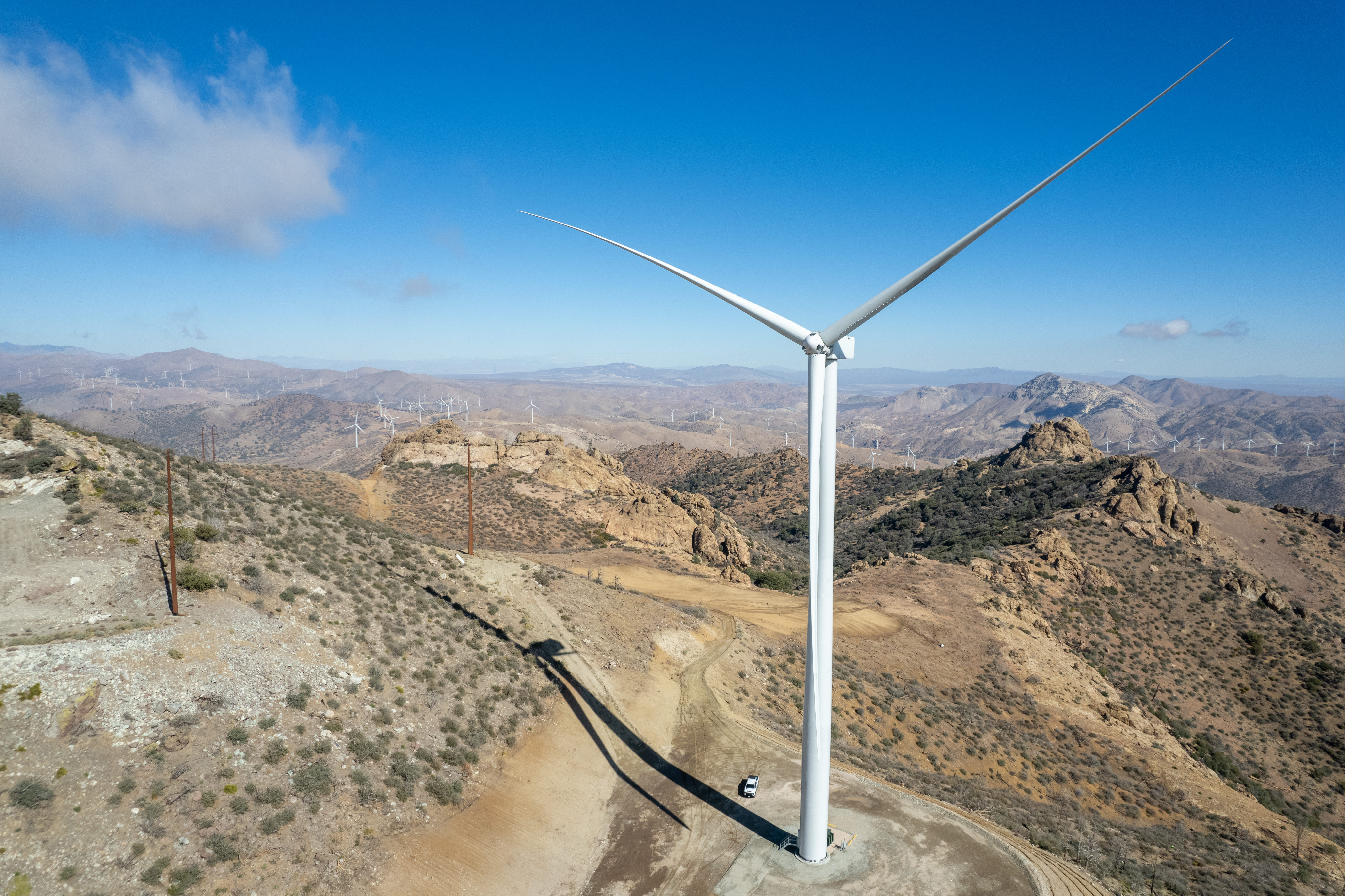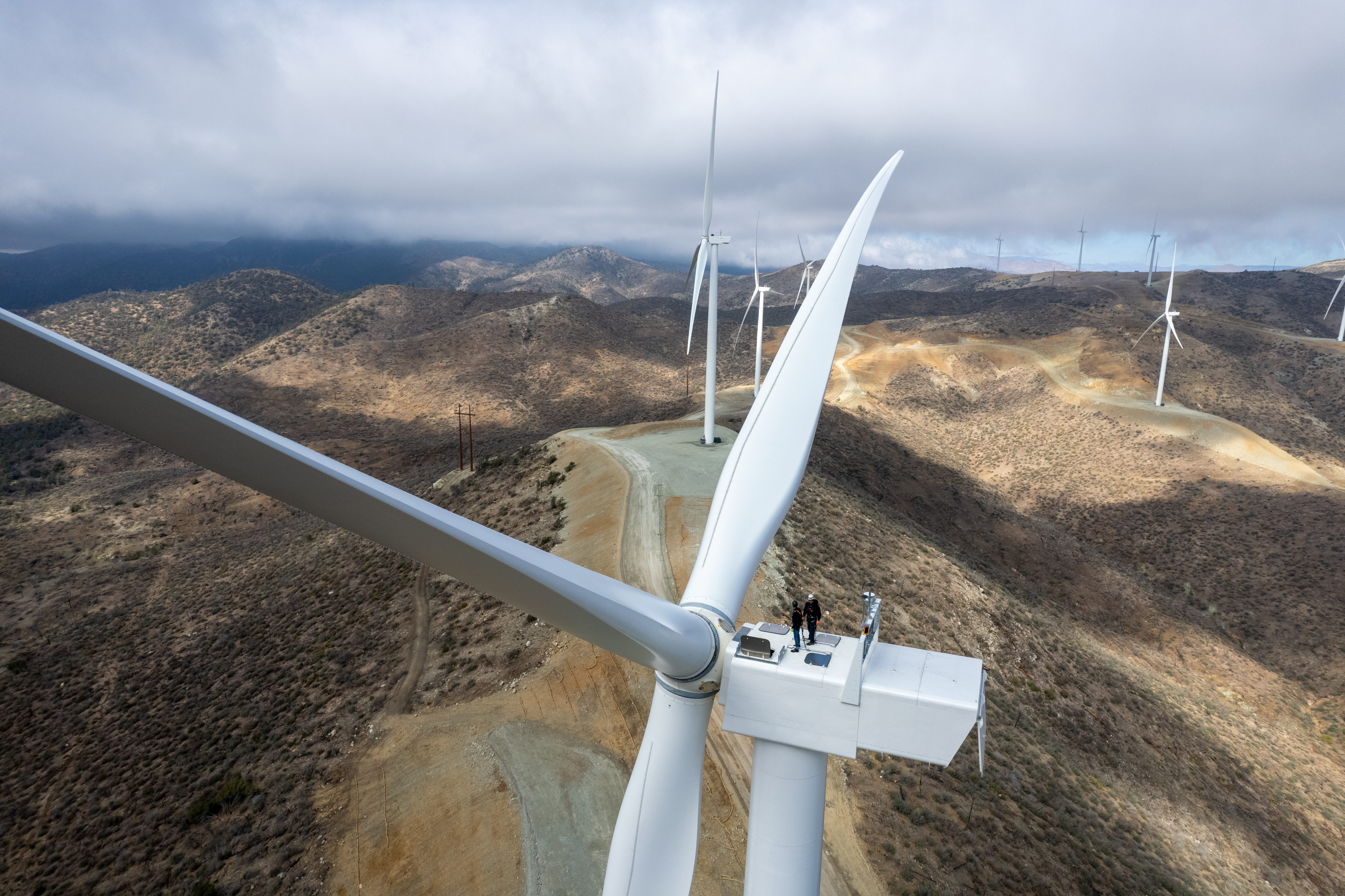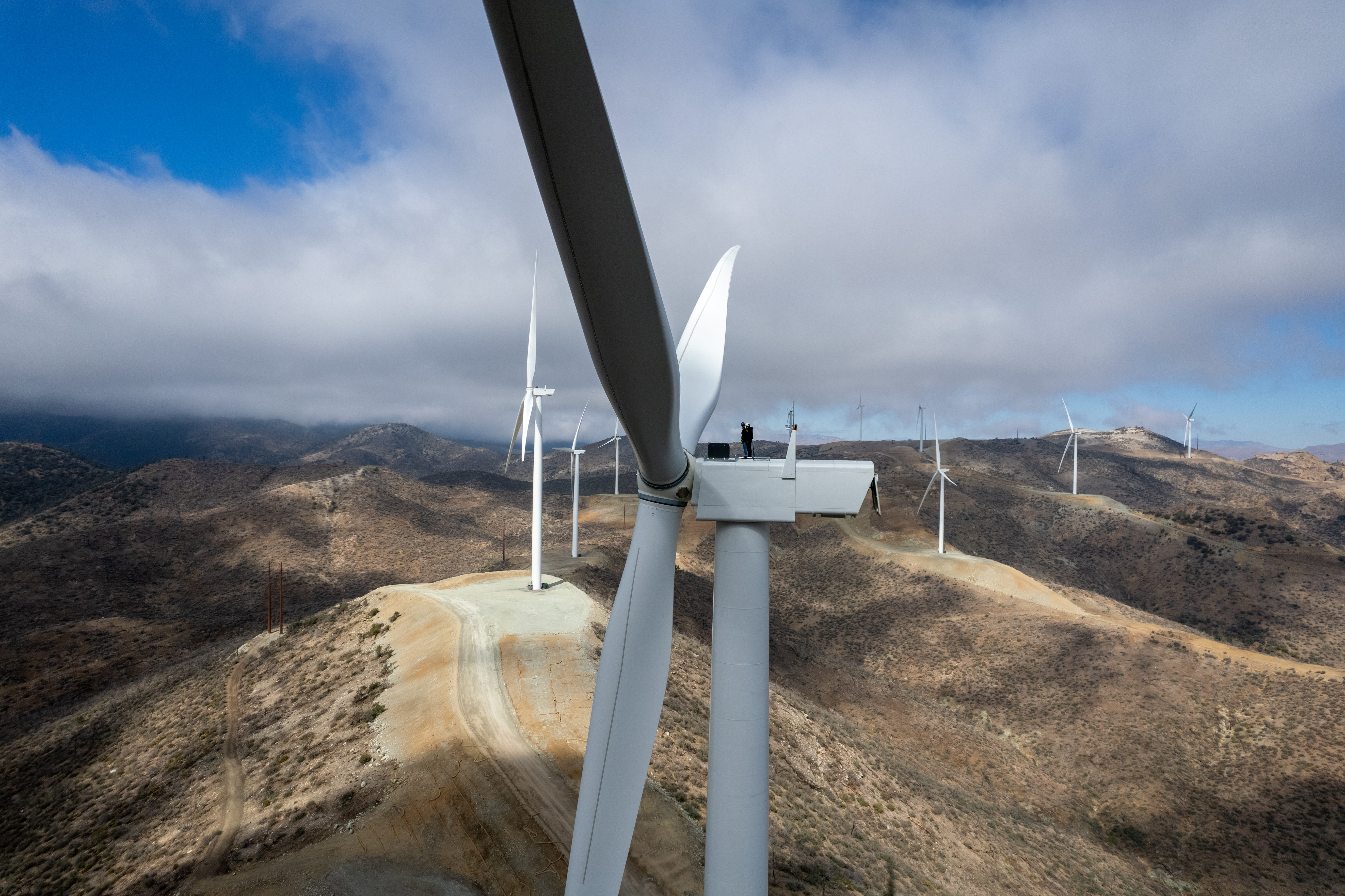Podcast: The future is now for BART’s renewable power initiatives
(Sky River Wind Farm. Photo Courtesy: NextEra Energy Resources)
Transcript below:
HOST: "BART has set an ambitious goal to get at least half of its power from renewable sources by 2025 but the Bay Area likely won’t have to wait that long. On the latest edition of our podcast series, “Hidden Tracks: Stories from BART” you’ll hear from BART Energy Manager Paul Bostrom who is spearheading the District’s clean power efforts. BART is well known for its impact on the Bay Area environment by taking thousands of cars off the roadways. The District is already greenhouse gas emission free. But now the focus is on increasing BART’s reliance on wind, solar, and hydroelectric power sources. Bostrom talks about BART’s progress and his recent visit to the Sky River Wind Farm, one of the District’s newest sources of energy. Innovative projects like the Sky River Wind Farm are expected to help BART increase its reliance on renewable energy from 5% to as much as 50% over the next year.
HOST: “And I'm now speaking with Paul Bostrom, BART's Energy Manager and Paul, thank you so much for your time and talking about a topic that I think a lot of our riders are interested in.”
BOSTROM: “Happy to be here, Chris, thanks for having me.”
HOST: “I've heard BART described as a unicorn when it comes to getting its energy. What do you think of that description? What do you think it means?”
BOSTROM: “I think there's some truth to that, Chris. Today BART's in a position where very few public agencies are in California. We're one of two that have unrestricted access to California's wholesale markets to procure its power at wholesale, but solely to serve its own end use. So typically, that's a function that's reserved for utilities in the state that are going out and buying power for resale to retail customers. So, BART and Department of Water Resources is one of two agencies who have really been granted that authority again, so we can serve its own end use.”
HOST: “And of course, the real goal here is for BART to get to 100% use of energy from renewable sources. Tell us where we are right now and how long do you think it will take to reach that goal?”
BOSTROM: “It's a great question, Chris. Right now we're in the midst of a transition. So, over the past few years, that since about 2017, we've really been relying primarily on hydroelectric imports from the Pacific Northwest. So that's a type of energy that's greenhouse gas free, which is a great benefit to the climate. But those types of resources aren't defined as renewable in the state of California. So today, you know, we're making a transition to resources that do qualify as eligible renewable, namely one large solar project the Slate Polar Project, and a large wind project Sky River Wind Project. Together, those are going to serve about 50% of BART's needs moving forward. In the future, we're continuing to make a transition to renewable energy consistent with a Board-adopted policy called the Wholesale Electricity Portfolio Policy. And under that policy, we've made a commitment to reach 100% renewable energy by 2045.”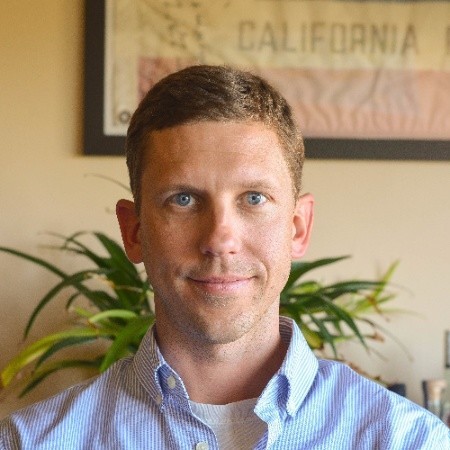
HOST: “One of the questions we see on social media quite a bit is why is large hydro not considered renewable energy?”
BOSTROM: “It's a great question, Chris. You know, in some places, large hydro is considered renewable energy but in the state of California, under California state law, it is not considered renewable energy. A little bit of history. On that, in the state of California, all of the clean energy objectives really lined up to a policy mechanism called the Renewable Portfolio Standard that was adopted in California in the early 2000s. At that time, it was really focused on where are we taking the electric sector in the state. California enjoys a very rich large hydro resource. We already have quite a bit of hydro capacity in the state. And so at that time, policymakers were really looking for incentives to create demand for new technologies; solar, wind, and the expectation was if they could create a large market demand for those types of technologies, they can drive down the cost. And in fact, here we are in 2020-21 today, and I think, California, to be sure is not the only contributor in terms of driving down the cost of those types of technologies, but we really made a large contribution in terms of bending the cost curve and so today, wind and solar are orders of magnitude cheaper than they were in the early 2000s when that policy was first adopted.”
HOST: “So, it sounds like pursuing renewable energy is actually going to be cost efficient for BART.”
BOSTROM: “It absolutely is going to be cost efficient. You know, again, we have these two contracts that just came online Sky River Wind and Slate Solar. And I'll just note both of those contracts were executed in 2017. They do enjoy the benefit of an investment tax credit and a production tax credit. But today on a cost per unit basis, there are two of our cheapest contracts in BART’s supply portfolio.”
HOST: “Speaking with Paul Bostrom, the BART Energy Manager and you mentioned the Sky River Wind Farm, you actually recently made a visit there. What is it and where is it?”
BOSTROM: “Yeah, so Sky River Wind is a 30-megawatt wind project. It consists of 10 turbines, three megawatts each and it's located in the Tehachapi Mountains south of Bakersfield in the Central Valley. So that's really kind of the gateway to the Mojave Desert. And it's a beautiful sight down in the Tehachapi Pass. So if you could picture kind of 10 large turbines dotting the ridge of a mountaintop that is where the project is located. And the reason it's located there is because the wind resources are really pretty prolific. It's one of the richest winds and resources in the west and certainly one of the richest in the state. You know, BART's very fortunate to sign a contract with a project located in the Tehachapi Mountains because today there's really not much developable land left for wind sites. And in fact, this project is a repower project. So before BART's project, there was a wind project that was located there, serving Southern California Edison for the past 20 years. And so BART’s project came along at the conclusion of that contract, and replaced those turbines with larger, more modern, more efficient turbines. And that’s the BART Sky River Wind Project today.”
HOST: “I think a lot of people in the Bay Area when they think of wind turbines, they think of the Altamont Pass, is it similar to that?”
BOSTROM: “Very much so, very much so in fact, it's perhaps more developed than the Altamont Pass. So, if you go where to go down to Tehachapi today, you could basically, 360 view, you'd be seeing wind turbines dotting the skyline and all around you.”
(Photo Courtesy: NexEra Energy Resources)
HOST: “And I know you got the 360-view. You went down there and you climbed up into one of these turbines and what an experience that must have been.”
BOSTROM: “It was fantastic. I'll tell you, I enjoy my job. It's a fantastic job but it has me sitting in a chair, oftentimes in front of the computer, looking at Excel spreadsheets, looking at contracts, meetings with counterparties, and so forth. So, this was a different experience for me. This was an opportunity to go down and really get a sense of the scale of this project. I mean, just to give you a sense, each one of these turbines is about 300 feet tall. In BART speak, if you were to take a BART car and prop it up vertically, you could stack four and a half of those on top of each other and that's about the height of the turbine we're talking about. On top of that tower, there's a component called the turbine’s cell. That's about the size of a studio apartment in San Francisco and that houses the gearbox, the entire drive train, the electric generator, the brake assembly, but just to give you a sense of scale, and that's how big each one of these turbines are. At the end of the day it's really a testament to the construction of the project. Wind sites are selected because they have strong winds and consistent winds. But as you can imagine, it's very hard to construct in that type of environment. So, when you're thinking about cranes that are assembling these types of things, these are the practical challenges that they're dealing with.”
HOST: “What an incredible experience to see that and climb inside of this huge structure. What is it like to think of that and just how difficult it was to build it and then considering that the energy from this is being shipped up all the way to the Bay Area to power our trains?”
BOSTROM: “It's really pretty fantastic. And you know, a lot of credit goes to the developer. You know, these are folks, we choose developers that have experience developing projects in California that are experienced with tough terrain that are experienced in building and in challenging conditions. And in light of all that we had a global pandemic going on. So, there's supply chain challenges left and right. I'll just note when you're thinking about the blade size of these things, you have to specifically select where they can be delivered in terms of a port. This was the Port of Los Angeles. You got to think about the route to get the blade from the coast to the Tehachapi Mountains, and then you got to think about construction. So, it's a lot of credit to those teams that were out there for almost a year, getting this project constructed. And today it's fully operational and delivering power to BART.”
HOST: “I'm speaking with BART Energy Manager Paul Bostrom. We've talked a bit about the future where BART hopes to go let's step back and talk about where we've been. In the past how has BART acquired its electricity to run its trains?”
BOSTROM: “It's a great question, Chris. There's a few chapters to the history of electric procurement at BART. Beginning in the 70s taking us up through the mid-90s effectively we were a retail customer of PG&E. At that time, PG&E was a fully vertically integrated utility. So, it controlled kind of all aspects of power generation and delivery from the power plants to the transmission infrastructure, to the distribution infrastructure, and over to the BART system. That changed a little bit in the mid-90s. We were granted authority to access a specific type of wholesale power. It's called federal preference power. Typically, federal preference power comes from hydro facilities that are affiliated with the US Department of Energy and typically it utilizes power that's generated sort of as a byproduct of these federal dam infrastructure. From the 90s through about 2016 PG&E was very cooperative in terms of delivering some of that power to BART, and they would supplement in terms of the delta between the power deliveries under contract that BART was taking and BART's total load requirements and they were kind of supplementing with generation that they were providing. In 2016, we kind of reached the natural conclusion of our transmission and distribution agreements with PG&E. Of course by that time, the sector had gone through a little bit of restructuring, so there's now a competitive market for generation in the state. PG&E took a took a step back and took a look at the situation and decided they no longer wanted to serve as BART’s interface with California wholesale markets. So at that time, BART was in a position where we kind of stood up on our own and went through a bit of a regulatory process worked closely with PG&E and the California ISO, the Independent System Operator which administers the wholesale markets in California, and registered BART as a wholesale market participant unto itself. And since 2017, BART is participating in markets alongside investor-owned utilities and publicly-owned utilities, community choice aggregators, and really securing its own power supply wholesale.”
HOST: “I would think a lot of other transit agencies might be looking at what's happening here at BART, and might have questions and might want to follow in our footsteps. Is that happening?”
BOSTROM: “We do get questions from time to time. I would say the regulatory structure in the electric sector has changed a little bit. One of the premises of BART taking some of that federal preference power was choice. You know, back in the day, there was not a lot of choice in Northern California in terms of power supply, PG&E was the only game in town. Today there's a lot more choice in terms of how to buy power on a retail basis. While there is interest from other transit operators to kind of pursue wholesale power procurement there has been a little bit of pushback from legislators in terms of fully opening the door.”
HOST: “Interesting and looking at the other side of it. We're able to procure our power from various sources, but we're not in the business of selling it back to anyone, right?”
BOSTROM: “Absolutely and that's kind of a condition of some of the authorities that we've enjoyed over time. I'll note that that initial authority to access federal preference power really kind of put BART on a path and at that time, we were signing long term agreements. So as the power sector has evolved in California over time, we've had to make choices based on our situation. Had it been a clean slate today we may be in a very different place.”
(Photo Courtesy: NextEra Energy Resources)
HOST: “Speaking with BART Energy Manager, Paul Bostrom. You touched a bit on the cost savings earlier and I’d like to explore that. Describe how BART will save money by switching to renewable energy.”
BOSTROM: “It's a great question. In fact, today we are saving money by switching to renewable energy. So again, as we mentioned before, today, in combination between the Sky River Wind Project and the Slate Solar Project, those two projects will supply about 50% of our total needs. And again, those are two of our lowest price contracts in our supply portfolio. The balance of our needs are really served from a handful of small legacy power purchase agreements, and some short-term agreements to kind of fill the gaps. As those legacy contracts and short-term agreements roll off of our supply portfolio we'll have an opportunity to take a look at filling some of those supply positions with new low cost renewable energy contracts.”
HOST: “Are these renewable sources reliable? Can we count on them and always be confident that BART has the power it needs?”
BOSTROM: “It's a great question and frankly, some of these intermittent renewable contracts don't come without some risk. There are some challenges. So, wind, solar they’re what you call as-available resources, so we take deliveries of that power as it's generated. There is some question in terms of how much is going to be delivered and when it's going to be delivered, and neither source is perfectly predictable in terms of how much power we'll get in any given time and as you know, the wind can stop blowing and a cloud can go over a solar field. So, what we really strive for is diversity in our power portfolio. We want as much as possible, we want to be taking clean, renewable energy, but we want to sort of supplement that with what we call firmer sources of generation. So dispatchable hydro, primarily dispatchable hydro is what we use to kind of shape around some of those renewable resources.”
HOST: “Another question that we've seen come up when it comes to renewables is apparently not all renewables are created equal. What's the difference that separates a source when it comes to being GHG Free? Greenhouse gas free?
BOSTROM: “Yeah. That's a great question. That's something we get a lot. And I'll say it's not the world's simplest answer. So, let's quickly sort of define GHG free and we'll define renewable, and we'll compare the two. So, GHG-free resources are resources that do not produce or emit greenhouse gases, namely carbon dioxide, but there's others as a byproduct of the power generation process. So that could be hydro, it could be solar, it could be wind, but it could also be nuclear, and it could also be large hydro. Renewable sources or sources that I would say generally, they're defined as sources that don't deplete the fuel source as they generate power. In the state of California there is a specific definition for renewable resources under statute. And again, that was really developed to support the state's renewable portfolio standard in the early 2000s. So those resources include wind, solar, small hydroelectric power, that’s from a river, less than 30 megawatts hydro facilities, but it also includes a couple of resources that do emit small amounts of GHG emissions. So geothermal produces a very small amount of GHG emissions, and it also includes bioenergy, so biomass and biogas. And the thought there is that absent producing power from, take bioenergy for example, absent producing power from the sources, the biomass and the biogas, left to their own devices, they would decompose and put emissions in the atmosphere anyways. And in the case of biogas, sometimes it's methane gas rather than carbon dioxide, which actually has a much higher global warming potential. The state took a look at that situation and recognizing that we have large sources of bioenergy in the state, particularly with some of the beetle kill issues we've been dealing with in the last few years and they determined that that was a sufficient source of renewable energy for the purposes of the policy.”
HOST: “Speaking with BART Energy Manager, Paul Bostrom, and Paul put it in perspective for us. I would have to imagine that BART is one of the largest consumers of electricity around. All of our trains except BART-to-Antioch run on electricity, we use it to power our stations. Give us that context, how much do we need?
BOSTROM: “Absolutely. If I were to quantify it, historically BART's used about 400,000 to 425,000 megawatt hours per year. What does that mean? Oftentimes, we kind of compare that to, it's approximately the same load as the city of Alameda. But to be sure, it's absolutely, we're one of the larger energy consumers in Northern California for sure, and I'll note that we play a pretty significant role in terms of our clean energy supply. The state of California generally has a pretty clean energy mix, electricity mix. But one of the challenges in the state's climate policy objectives is decarbonizing the transportation sector. BART plays a huge role in terms of decarbonizing the transportation sector generally, but when you think about also kind of a GHG-free electricity supply or a renewable energy supply on top of that you can really double the benefits in terms of environmental benefit and reducing some of the emissions.”
HOST: “And BART when you think of energy, it really is on two ends that were benefiting the environment. One you have the riders who are not driving. A BART train is 10 times more efficient than a car. So that's one end and now we're working on the actual power supply and getting it from renewable sources more and more. So, there's this combination that's happening right now. It seems like it would have a huge benefit on the Bay Area.”
BOSTROM: “That's absolutely correct and that's really the goal. That's the intent here. You know, again, the state's doing a lot to decarbonize the sector, primarily with electrification of buses and cars but let's not forget transit and what a what a resource BART is to the Bay Area.”
HOST: “Talk about it from a personal perspective. How meaningful is it to you to be in this position to help shepherd BART along as this transition to renewables is happening?”
BOSTROM: “Oh,it's fantastic. I come from a utility background, my experience is in electric power procurement. In those environments, you're really one of many, one of hundreds of people that’s playing a very small role in the process. The transition to BART has been one that has been fantastic. Today I really have the opportunity to put all of those skills together and kind of influence BART’s power supply on an end-to-end basis.”
HOST: “What would you say is the most challenging part of your job?”
BOSTROM: “One of the challenging aspects of my job is I've moved from a world where everybody speaks energy to a world where everybody speaks transit. And so, sometimes I see my role as really a bit of an interpreter, trying to go between, the policy sector and the electric sector generally, and translating some of that information into sort of a more of a transit-oriented world.”
HOST: “That's a really good place to close, I think. This is an opportunity, this podcast to talk directly to the riders. What do you want to tell them? What do you want them to take away from the efforts happening at BART right now? What does it mean to them and what do you think is the most important aspect of what's happening?”
BOSTROM: “You know, I think there's a lot of things to be proud of at BART. With respect to our power supply what I'd like to communicate is that this is very much real. All of what we're accomplishing, it's not just claims. It is substantiated by BART's participation in state programs, our performance is audited and verified by third parties. While there are entities all over the world that are making claims in terms of their greenness or their power supply I think we can really rest assured and be proud that BART’s is real, we're talking about real projects that are built here in California, steel in the ground, and those are the projects that are going to be serving our power supply for the next 20 years.”
HOST: “Paul Bostrom, BART’s Energy Manager, thank you so much for your time.”
BOSTROM: “Thanks so much, Chris. Happy to be with you.”
HOST: “And thank you for listening to ‘Hidden Tracks: Stories from BART.’ You can listen to our podcasts on SoundCloud, iTunes, Google Play, Stitcher, and of course at our website at BART.gov/podcasts.”
(Photo Courtesy: NextEra Energy Resources)
